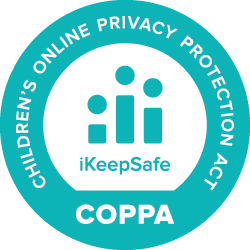Fibers
If you are reading this in school, chances are you are looking at either a screen or a sheet of paper. Did you know that before many classrooms used digital tools, the average student used more than 300 pounds of paper a year?
Resource Title:
Fibers
Description:
If you are reading this in school, chances are you are looking at either a screen or a sheet of paper. Did you know that before many classrooms used digital tools, the average student used more than 300 pounds of paper a year? If all that came from new fiber, every three students would use a full-grown tree each year.
Target Grade Level:
Grades K-12
Discipline or Course (Audience):
Science
Time Frame:
One 45-minute session
Suggested Grouping:
Individual
Key Vocabulary:
- Biodegradable: Something that can break down naturally, like food scraps in a garden.
- Breakdown: To take something apart into smaller pieces.
- Carbon Footprint: The amount of "bad air" (pollution) made by something we do or use.
- Cellulose: The main part of the cell walls of plants. It is what makes plants strong and sturdy.
- Composites: Things made by mixing different stuff together.
- Conservation: Saving and protecting nature and resources.
- Contamination: When something clean gets mixed with something dirty or unwanted.
- Fiber Content: A kind of tiny threads (fibers) that are in many products like clothing and paper.
- Fibers: Tiny, thin threads that make up materials like cloth and paper.
- Natural Fibers: Threads that come from plants or animals, like cotton or wool.
- Processing: Changing something from one form to another, like crushing cans.
- Pulp: A mushy mix of fibers and water used to make paper.
- Recycled Materials: Things made from stuff that was used before.
- Renewable resources: Things that nature can make again, like trees or sunlight.
- Reprocessing: Taking something that's already been recycled and making it into something else.
- Resource Depletion: Using up all of something, like running out of water.
- Sorting: Putting things into groups, like separating cans and bottles.
- Sustainability: Using things in a way that doesn't hurt the Earth so that we can still use our renewable resources in the future.
- Synthetic Fibers: Threads made by people in factories, like plastic threads.
- Textiles: Fabrics, like the stuff clothes are made of.
- Waste Stream: The path that trash takes from our homes to where it ends up.
Recommended Student Background Knowledge and Skills:
- A basic understanding of the recycling cycle.
Special Population Accommodations:
- Follow district guidelines for supporting ELL students. Use graphic organizers, anchor charts, and visuals to support and scaffold—Pre-teach vocabulary within the content.
- Follow district guidelines for supporting GT students. Gifted students thrive when given choices and opportunities to explore the complexities of the content. Encourage students to explore across disciplines. Provide executive functioning support and check-in as needed.
- Follow required accommodations based on student IEPs.
Remote Learning Adaptations:
This resource is appropriate for remote learning; no adaptations or modifications are necessary.
STUDENT CONTENT BELOW THIS LINE
If you are reading this in school, chances are you are looking at a screen or a sheet of paper. Did you know that before many classrooms used digital tools, the average student used more than 300 pounds of paper a year? If all that came from new fiber, every three students would use a full-grown tree each year.
Paper is mostly a chemical called cellulose. That’s the carbohydrate that is in the cell walls of most plants. It’s resistant to chemical breakdown, and very few animals can digest it.
Using Trees to Make Products
When a tree is cut down, the best parts become wood for houses, but what about the rest? That's where paper comes in! The other parts, like smaller twigs and bark, are collected too. These can be made into paper. We can also use the sawdust left when the logs are made into lumber. This requires shredding, dissolving the wood pulp with chemicals, and processing with a lot of water.
Cellulose is ideal for making strong but flexible materials. Paper has been made for thousands of years. Today, you might find the same chemicals in clothing and even building materials.
We use paper not just for reading and writing but also for packaging products and supplies. When you bought your cereal, track shoes, cell phone, or video game, it probably came in a container made from paper (often along with some plastic inside).
Reusing Fibers
Think about all those packages you get. Every box, every wrapper? That's part of the recycling story. And guess what? Your online shopping habits actually make a big difference! The way we consume paper products and package them has a huge influence on the trends in recycling. Carboard recycling is strong and exceeds over 85% recovery. Think of how easily we can get deliveries sent to our door with a push of a button. This packing and increasing consumer use means that packing paper and cardboard recycling is seeing strong and steady growth when we compare that to newspaper recycling, which has shifted and declined as consumers have moved to reading and digesting our news via digital media.
Recycling paper doesn’t just save trees. It saves energy for our planet, too. Think of the power needed to plant and grow trees, cut them down, transport them, and process them to make the paper. Recycling materials save 65 percent of that energy. Wow! 65% That's a lot of energy saved! Not only can energy be saved, but recycling can be profitable, too. Recycling is an industry that brings in over $9 billion a year to its employees and the country.
Take a look at Table 1 to find out how much of each material gets recovered and reused. As you think critically about the data, consider which materials are recovered the most and which are recovered the least. Is there a champion material we should applaud and celebrate?
Table 1: Materials and Recovery
Materials |
How Much Do We Recover? |
|
Paper and paperboard |
68.2% |
|
Glass |
25% |
|
Steel |
33.1% |
|
Aluminum |
17.2% |
|
Other nonferrous metals † |
67.3% |
|
Total metals |
34.1% |
|
Plastics |
8.7% |
|
Rubber and leather |
18.2% |
|
Textiles |
14.7% |
|
Wood |
17.1% |
https://www.epa.gov/sites/default/files/2021-01/documents/2018_ff_fact_sheet_dec_2020_fnl_508.pdf
Reflect and Apply:
- Where does most of our paper come from?
- What are the steps to make paper from a tree?
- What are three other products that come from trees?
- Look at the data table. Which product is recycled most? Why might that be important to know?
- Why do you think plastics have a lower recycling rate than paper? What challenges might exist?
- Looking at the data, what does this tell you about our society's consumption and waste habits? How can we use this information to make positive changes?
- How is recycling a part of our everyday lives?
- Why might the end products that are created by recycling be essential to our daily lives?
Extensions:
- Create a slogan that encourages people to recycle more. Be sure to include why it's important to recycle and how people can get involved in recycling. Go above and beyond and create a social media post or video incorporating your slogan. Be sure to share your product with a peer.
- Graph the percentage recovered from the recyclable materials. You can use the chart below or create a chart in a digital format using tools such as Google or Canva.


